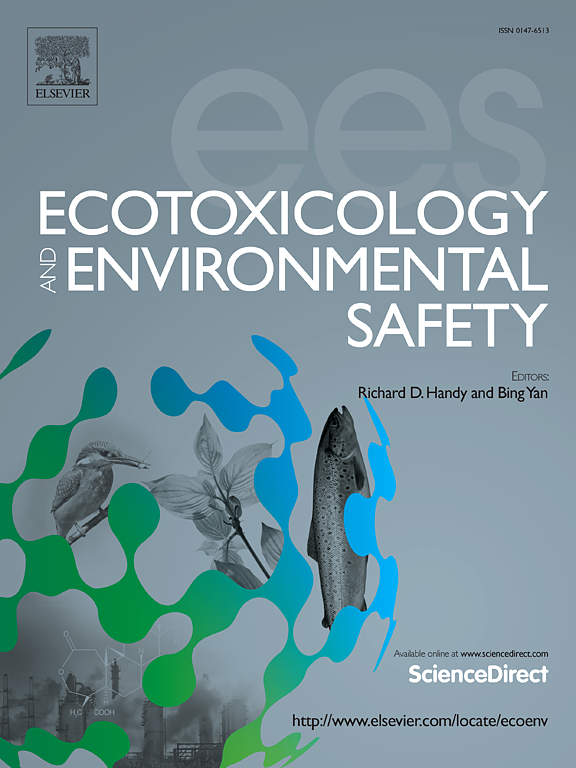Triclosan exposure induces liver fibrosis in mice: The heterogeneous nuclear ribonucleoprotein A1/pyruvate kinase M2 axis drives hepatic stellate cell activation
IF 6.2
2区 环境科学与生态学
Q1 ENVIRONMENTAL SCIENCES
引用次数: 0
Abstract
Triclosan (TCS) is an effective broad-spectrum antibacterial agent. TCS possesses a stable structure, can easily accumulate in the environment, and may have numerous negative impacts on human health. One organ particularly susceptible to TCS damage is the liver; however, the molecular mechanisms underlying TCS-induced liver damage remain unclear. A long-term TCS exposure model was established in C57BL/6 mice through maternal administration from gestation to postnatal 8-week-old. The offspring were randomly assigned to three groups (0, 50, and 100 mg/kg TCS) with six animals per group, ensuring an equal gender distribution (3 males and 3 females). The results showed that TCS-exposed mice exhibited serum aspartate aminotransferase, alanine aminotransferase, and alkaline phosphatase enzyme activities increased by 1.5–2 times when compared with vehicle-treated mice, along with features of liver fibrosis. In the LX-2 cell line, used as an in vitro model, TCS promoted proliferation and migration and induced the activation of hepatic stellate cells (HSCs). The level of pyruvate kinase M2 (PKM2) dimer increased by 200 % in LX-2 cells treated with TCS. PKM2 dimer overexpression stimulated HSC activation, whereas treatment with TEPP-46 (a PKM2 dimer inhibitor) significantly decreased the activation process. The expression of heterogeneous ribonucleoprotein particle A1 (hnRNPA1) was upregulated in the TCS treatment group and promoted the PKM2 expression. Moreover, disruption of the hnRNPA1/PKM2 axis reduced HSC proliferation and migration activated by TCS. Overall, our findings highlighted that TCS could cause liver fibrosis by stimulating the proliferation and migration of HSCs activated via the hnRNPA1/PKM2 axis, providing promising treatment options for TCS-related liver damage.
求助全文
约1分钟内获得全文
求助全文
来源期刊
CiteScore
12.10
自引率
5.90%
发文量
1234
审稿时长
88 days
期刊介绍:
Ecotoxicology and Environmental Safety is a multi-disciplinary journal that focuses on understanding the exposure and effects of environmental contamination on organisms including human health. The scope of the journal covers three main themes. The topics within these themes, indicated below, include (but are not limited to) the following: Ecotoxicology、Environmental Chemistry、Environmental Safety etc.

 求助内容:
求助内容: 应助结果提醒方式:
应助结果提醒方式:


